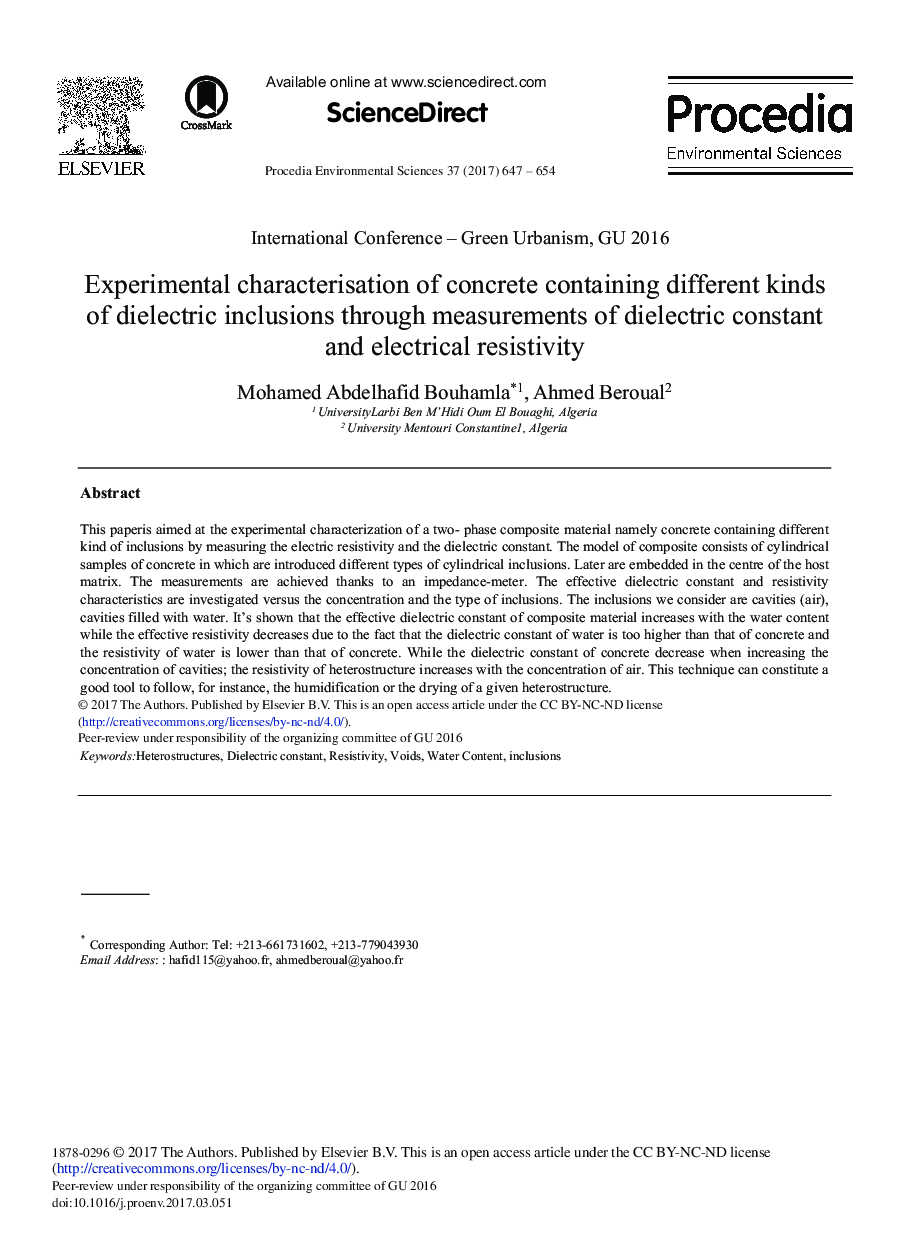| Article ID | Journal | Published Year | Pages | File Type |
|---|---|---|---|---|
| 5745168 | Procedia Environmental Sciences | 2017 | 8 Pages |
This paperis aimed at the experimental characterization of a two- phase composite material namely concrete containing different kind of inclusions by measuring the electric resistivity and the dielectric constant. The model of composite consists of cylindrical samples of concrete in which are introduced different types of cylindrical inclusions. Later are embedded in the centre of the host matrix. The measurements are achieved thanks to an impedance-meter. The effective dielectric constant and resistivity characteristics are investigated versus the concentration and the type of inclusions. The inclusions we consider are cavities (air), cavities filled with water. It's shown that the effective dielectric constant of composite material increases with the water content while the effective resistivity decreases due to the fact that the dielectric constant of water is too higher than that of concrete and the resistivity of water is lower than that of concrete. While the dielectric constant of concrete decrease when increasing the concentration of cavities; the resistivity of heterostructure increases with the concentration of air. This technique can constitute a good tool to follow, for instance, the humidification or the drying of a given heterostructure.
